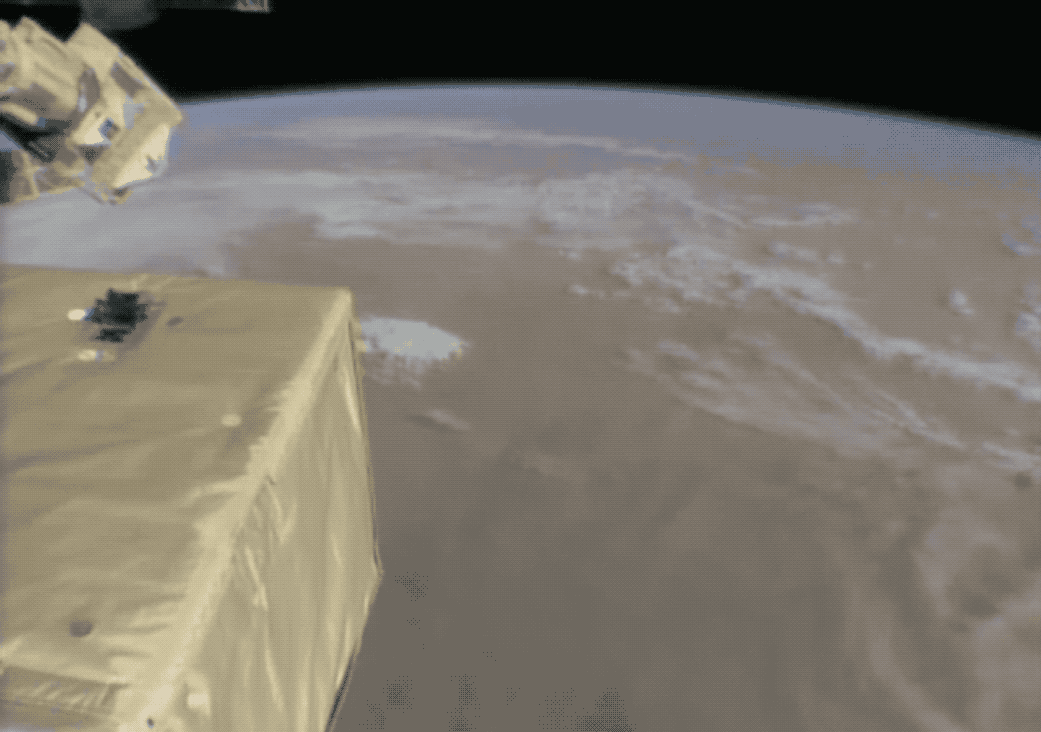Tiny Satellite Begins Hunt for Missing Milky-Way Matter

A tiny satellite has set out to investigate the halo of incredibly hot gas surrounding the Milky Way — and it could help scientists track down the huge amount of missing matter in the universe.
NASA deployed the 26-lb. (12 kilograms) satellite, called HaloSat, on July 13 from the International Space Station.
Scientists can't find a whopping one-third of all the matter that should exist in the universe. It's not dark matter; it's just … missing. They've calculated how much matter was in the universe 400,000 years after the Big Bang based on information encoded in the cosmic microwave background. And they've calculated how much mass they see now in galaxies, stars, planets, dust and gas. But the numbers do not add up. [Our Milky Way Galaxy Has Cosmic Halo 11.4 Billion Years Old]
"We should have all the matter today that we had back when the universe was 400,000 years old," said Philip Kaaret, HaloSat's principal investigator and an astronomer at the University of Iowa, said in a NASA statement. "Where did it go?"
Scientists have made some progress in tracking down chunks of the missing matter, and they've narrowed it down to two hiding places: within galaxies themselves, or spread out in the space between them. So scientists are starting close to home, by searching for the matter that's missing from the Milky Way.
HaloSat will try to find the missing matter by mapping the galaxy's halo of superhot gas, which can reach 3.6 million degrees Fahrenheit (2 million degrees Celsius), according to NASA. That's hot enough for oxygen gas to produce X-rays, which HaloSat will measure across the sky to figure out the shape of the halo and determine whether it's spread evenly around the Milky Way or in a flattened disk, like a fried egg.
"If you think of the galactic halo in the fried egg model, it will have a different distribution of brightness when you look straight up out of it from Earth than when you look at wider angles," Keith Jahoda, a HaloSat co-investigator and a NASA astrophysicist, said in the statement. "If it's in some quasi-spherical shape, compared to the dimensions of the galaxy, then you expect it to be more nearly the same brightness in all directions."
Get the Space.com Newsletter
Breaking space news, the latest updates on rocket launches, skywatching events and more!
Once scientists know how the halo is arranged, they can estimate its mass and determine whether it's hiding all that missing matter.
But to make those measurements, HaloSat needs to be careful not to fall for an imposter signal. That signal is caused by the solar wind, the constant stream of highly charged particles produced by the sun, which produces X-ray signatures that mimic that of the galactic halo.
To avoid being tricked, HaloSat will switch tasks according to where it is in its orbit around Earth: When it's over the night side, it will gather data, and when it's over the daylight side, it will charge up and send that information home. That should make HaloSat's data much cleaner than other X-ray observations, the researchers think.
The mission will last between seven months and a year.
Email Meghan Bartels at mbartels@space.com or follow her @meghanbartels. Follow us @Spacedotcom, Facebook and Google+. Original article on Space.com.
Join our Space Forums to keep talking space on the latest missions, night sky and more! And if you have a news tip, correction or comment, let us know at: community@space.com.

Meghan is a senior writer at Space.com and has more than five years' experience as a science journalist based in New York City. She joined Space.com in July 2018, with previous writing published in outlets including Newsweek and Audubon. Meghan earned an MA in science journalism from New York University and a BA in classics from Georgetown University, and in her free time she enjoys reading and visiting museums. Follow her on Twitter at @meghanbartels.









